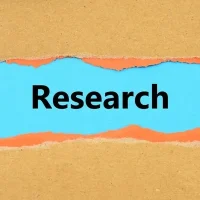Deadline: 29-Jan-21
As part of the Government of Canada’s efforts to address sexually transmitted and blood-borne infections (STBBI) in Canada, the Public Health Agency of Canada (PHAC) invests $7M annually under the Harm Reduction Fund (HRF) to support community-based programming to reduce the incidence of HIV and hepatitis C being spread through the sharing of drug-use equipment.
Harm reduction refers to a set of practices that aim to reduce the harms associated with substance use. Harm reduction:
- Is about meeting people where they are at and supporting them to work towards their goals.
- Aims to decrease adverse health, social and economic outcomes, such as disease and injury that may result from an individual’s actions.
- Represents policies, strategies, services and practices, which aim to assist people to live safer and healthier lives.
- Acknowledges that each person is different, has different goals and requires different supports and strategies.
- Is not focused on the reduction of substance use or abstinence as a precursor to receiving respect, compassion or services.
Objectives
The Harm Reduction Fund seeks to ensure that:
- Community-based efforts reach key populations, including people unaware of their HIV/hepatitis C status, and link them to testing, prevention, treatment and care.
- Communities design and implement evidence-based front-line projects to prevent new and reoccurring infections.
- High impact interventions are brought to scale so that more people benefit from them.
- Community-based efforts reduce stigma toward populations disproportionately affected by STBBI, including people living with HIV or hepatitis C.
Funding Information
- Organizations can apply for funding for a minimum of three (3) to a maximum of five (5) years, depending on the scope of the project.
- Front-line projects will be eligible to receive a maximum of $250,000 annually for up to 3 years. This represents double the funding previously allowable under the HRF.
- Projects that are regional or national in scope and seek to address broader systemic issues are eligible for up to 5 years of funding and can apply for more funding with a strong rationale.
Expected outcomes of STBBI community investments
By 2025, projects supported through the Harm Reduction Fund will:
- Increase the knowledge of effective evidence-based HIV, hepatitis C or other sexually transmitted infections (STI) prevention measures among key populations and target audiences.
- Strengthen the capacity (skills and abilities) of key populations and target audiences to prevent infections and to improve health outcomes related to STBBI.
- Strengthen the capacity (skills and abilities) of target audiences to provide culturally safe and stigma-free STBBI prevention, testing, treatment and care services.
By 2027, projects supported through the Harm Reduction Fund will:
- Increase uptake of effective evidence-based HIV, hepatitis C or other STI prevention measures among key populations.
- Improve access to effective STBBI prevention, testing, treatment and ongoing care, and support for key populations.
- Improve the cultural safety and stigma-free nature of STBBI prevention, testing, treatment and ongoing care, and support services provided by target audiences.
Eligible Applicants
The following Canadian groups and institutions are eligible to receive project funding:
- A not-for-profit, registered as incorporated, voluntary organizations or corporations.
- Not-for-profit, unincorporated organizations, societies or coalitions.
- Post-secondary institutions seeking to undertake community-based programming, but not research.
- Provincial and territorial health providers including Regional Health Authorities and Local Public Health Services.
- Indigenous organizations
- Indigenous organizations are those governed by and primarily serving First Nations, Inuit or Métis Peoples.
- Applicants can submit an LOI as a single organization or an LOI as part of a community alliance, or both. However, it must be clear how the activities presented in each LOI are separate from each other.
When applying as a single organization applicants must demonstrate the following in the LOI:
- A minimum two (2) years of experience in the prevention and control of HIV and hepatitis C, using a harm reduction approach, among people who share drug-use equipment; in a manner that actively and meaningfully engages those individuals.
- Organizations with less than two (2) years of experience in the above-mentioned criteria who would like to apply for funding are required to apply as part of a community alliance.
- Organizations funded under HRF cannot serve as third-party funders for other organizations unless these organizations are identified as contractors and are responsible for delivering specific activities or outputs. They may instead consider applying as a community alliance.
How to Apply
- The solicitation for the HRF is currently open and the deadline to submit a Letter of Intent (LOI) is January 29, 2021, at 3 pm EST. PHAC will only accept LOIs until the submission deadline.
- Only those applications submitted through the online portal will be accepted for consideration. They will not consider applications received by email, courier or postal service.
- For more information about applying for the HRF please contact them.
For more information, visit https://bit.ly/2LjJrAy









































